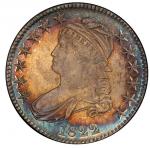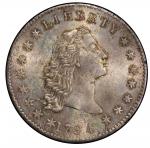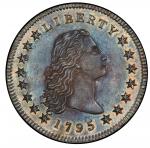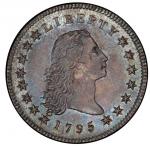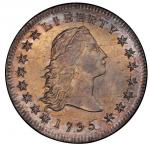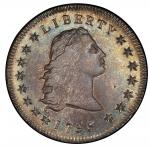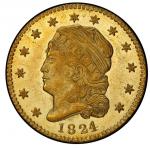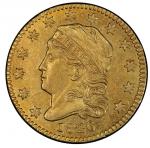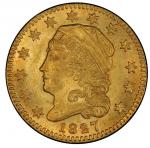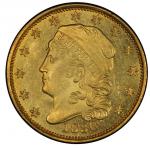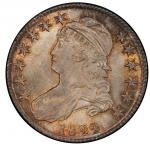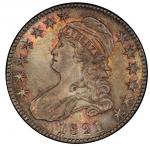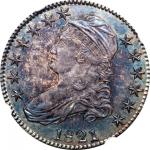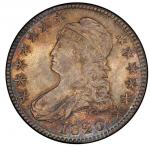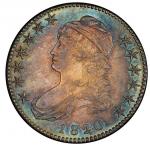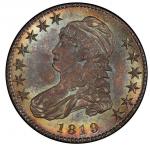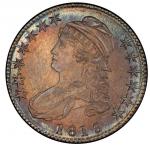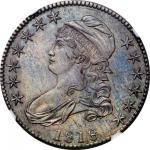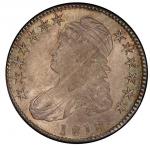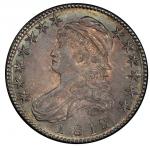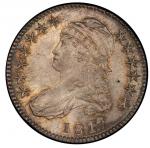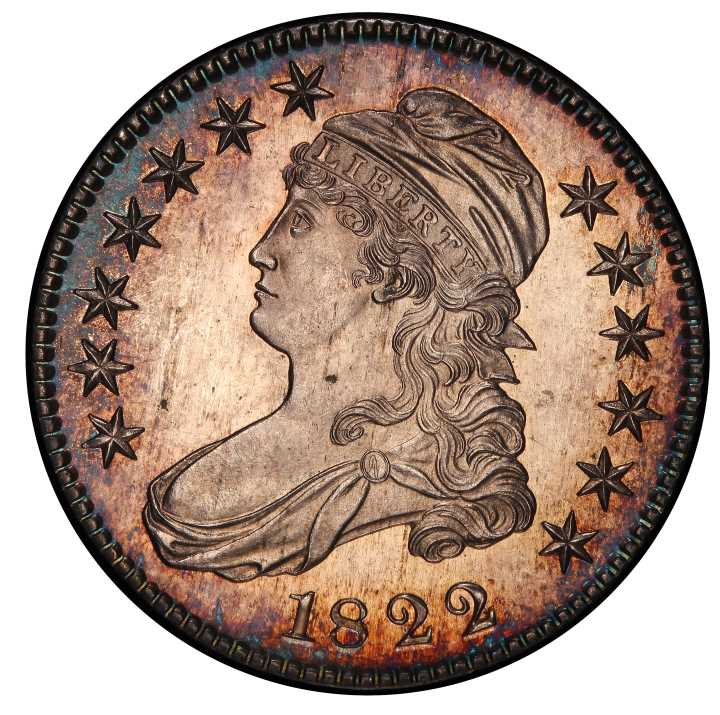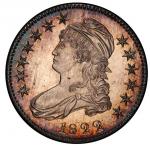The collection of Thomas Cleneay is said to be the most costly, most numerous, and most valuable in the United States. — Kings Pocket-Book of Cincinnati, 1879..An utterly spectacular achievement in metal, evidence of the lessons the U.S. Mint learned through their occasional experimentation with special strikes prior to 1821 and their more methodical approach to creating Proof coins beginning in that year. The planchet has been polished to a reflective sheen over its entire surface, rendering an ideal canvas upon which to strike a design whose device has been frosted to provide maximum contrast. This Proof shows many of the hallmarks of later Proof strikings, including the fine microscopic field texturing that resembles striae gravidarum, squared rims, and complete design detail. However, it also shares some commonalities with earlier special strikings, including slight planchet imperfections that here manifest as a vertical striation through Libertys ear and E of LIBERTY, another less notable striation in the left obverse field that is chiefly visible because of a planchet gap or natural depression inside of the highest tip of star 1, and some other lighter striations that were well struck out and are only barely visible elsewhere. Examination finds no lintmarks, nor evidence of double striking (which was rarely, if ever, employed to produce early Proof coins such as this), but regardless this is obviously a Proof. Further, it acts as a useful bridge, a way to approach and study other similar coins of this era that are clearly special, but that some experts in the field are loathe to label as fully Proof. The imprecise terminology of the past, when any coin with reflective fields (or, worse, a post-Mint polishing) was termed a Proof has yielded to a modern reticence to use that label for some coins. Some of this reticence stems from a lack of vocabulary: modern numismatists use a term -- Proof -- that did not exist in coining parlance in 1822, and have defined it in a way that would befuddle the coiners of that era.This Proof specimen is majestically beautiful, with the brightness of chrome slightly mellowed by toning overlaid by countless decades, accruing bright magenta and blue at the rims and a fine sheen of pale gold over the centers. Technically choice and showing only the scarcest of scattered hairlines, this piece has been cherished since its manufacture. Each detail is definitive, making this the ultimate exemplar of the design type. The die state is very early, with the fine polish lines near Libertys chin still evident and the recutting on star 10 crisp. The tops of both the first and second U and M in UNUM have been polished away as part of the process of making the die faces gleam in preparation of striking the ultimate half dollar of this date. In that mission, the coiners succeeded.Writing about the presence of Proof 1822 Overton-103 half dollars in the 1890 Cleneay and 1961 Lichtenfels sales, Walter Breen wrote in his Encyclopedia of United States and Colonial Proof Coins that "the Cleneay plate is not clear enough to tell if these two are the same coin." Our copy of the Cleneay sale makes the question clear with absolute certainty, showing the tiny spot near stars 1 and 2 and the spot on Libertys neck with clarity, confirming that Cleneays coin is the same one Mrs. Emery May Norweb purchased from the Lichtenfels sale, the same coin offered here.Thomas Cleneay was one of the great American collectors of his day, a studious gatherer of coins and tokens, Native American artifacts, art objects, and more. He particularly liked Proof coins, as was noted in an analysis of his collection that appeared in the American Journal of Numismatics after the December 1890 auction of his cabinet, "the result of nearly forty years labor on the part of its late owner." "From an inspection of the catalogue it appears that his aim was to secure the best specimens attainable, whether Proofs or Uncirculated, of United States coinage," the review noted, "the coins are so uniformly fine that it was a matter of some difficulty for the compilers to call the special attention of buyers to particular examples." Listing some of the auctions highlights, this coin was noted along with a Proof 1821, 1838, "and others at nearly as high prices." The present specimen realized $17.The provenance of this coin following the Cleneay sale is murky. Most writers agree that the rare early Proof coins offered in the February 1961 Gustav Lichtenfels sale were formerly the property of Virgil Brand. However, this connection may be based on nothing more than speculation and the Brand-Lichtenfels connection inspired by the March 1964 Kreisberg-Schulman sale that named both consignors. Of course, being speculative doesnt necessarily mean this attribution is incorrect. The only other sensible origin for the coins is the Waldo Newcomer and Col. E.H.R. Green collections. With a bit of original source research, using the Brand notebooks at the American Numismatic Society or the Newcomer and Green inventories that exist in private hands, this is an answerable question.Just two confirmed Proof examples of this date exist: this coin and the Pittman coin, an Overton-114 that last sold in the Eugene Gardner sale of June 2014. Others are unconfirmed and unlikely to meet modern definitions of Proof status. The Reed Hawn O-111 and the George Scanlon O-114 have not been sold as Proofs since the early 1970s and are extremely dubious. The Eliasberg Overton-114 is an interesting coin, cataloged as "Proof-64 in our opinion, however, as will be seen, opinions may differ, the final determination rests with the buyer. Not all things in numismatics have precise yes-or-no answers." The coin has never been certified as a Proof by either service and is widely considered a prooflike business strike; it last sold as a PCGS MS-66. The only Proof to have been certified by NGC is the Pittman coin (graded Proof-64), and the only specimen to have been certified by PCGS is this one. While PCGS shows three entries for Proof 1822 half dollars on their Population Report, all of them represent submissions of this coin, including two before 2003.This is the single earliest Proof half dollar certified by PCGS, a coin of great rarity and history, pedigreed to several collections whose names are spoken with reverence. The finer of just two examples of this date known in Proof, it is among the highlights of the D. Brent Pogue Collection of Capped Bust half dollars, a coin that is both unmistakable and irreplaceable.

